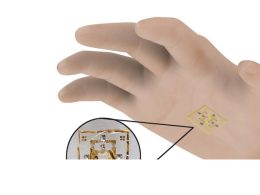Is it too much after half an hour in virtual reality? Motion sickness is by no means a new phenomenon, even if we think it is. Its symptoms include dizziness, sweating, headaches and nausea to the point of vomiting. The discomfort is caused by a deviation of the perceived environment from the visual one, or more precisely: we perceive movement but remain still in one place. Our head is confused by the different impressions that cannot be reconciled and comes to the conclusion that something must be very wrong. In order to get rid of the suspected hallucinations, our body has to be cleansed of toxins, which means we feel nauseous. Sound familiar? The same processes take place when we get travel sick from the rocking of the boat or reading while travelling by car.
[/g1_lead]Women and generally people with a more pronounced 3D perception are particularly susceptible to motion sickness. When the condition was already known as a result of normal video games, sometimes also known as "gaming sickness", those affected were still a minority. With games in virtual reality, however, up to 50% of users struggle with it. This is precisely why developers are working hard to improve the player's comfort and reduce the risk of motion sickness. So that we don't have to wait too long, we have collected a few tricks to help with motion sickness.
- No excessively fast movements
Our head is already struggling to process all the new impressions. Rapid changes of tempo and scene overwhelm our centre of perception and should therefore be avoided. It is recommended to maintain a constant playing tempo. Stopping abruptly also increases the risk of dizziness. - Aiming at a fixed point
Similar to spinning in circles without getting dizzy, it helps to have a fixed point that doesn't move. In reality, this is our nose, even if we are not consciously aware of it. Assistant Professor David Whittinghill therefore built a virtual nose into a rollercoaster game, which successfully helped participants to play for longer and even go unnoticed. - Ginger
Ginger is a popular natural remedy for travel sickness and reduces the occurrence of vomiting. The root can be chewed, crushed or taken as a tablet, making it a good alternative to medication. - Always walk in the line of sight
To avoid sending even more confusing signals to our thinking centre, movement and direction of view should match. After all, we also need to know where we are going. - The swivel chair
The swivel chair is a good solution. The body can turn with the head in all directions and the chair also serves as an orientation aid and support. Walking in the virtual area then feels as if you are travelling in a wheelchair. However, the length of the cable must be taken into account. - Limited field of vision
Moving further away from the screen is also often advised for motion sickness outside the virtual area. The smaller the field of vision, the less susceptible you are. However, this is difficult with VR glasses. That is why engineers are currently working on a way to reduce the field of vision without this having a negative impact on the gaming experience. - Breaks
Probably the most obvious tip is to take breaks to relax your brain. You can briefly close your eyes, get something to drink or get some fresh air. Some games even tell us to put the VR Gear aside for a moment and take a break. - Habituation
Last but not least, some good news. Motion sickness can actually be trained away. Over time, we get used to the experience and hardly anyone can't improve their tolerance, according to psychologist Behrang Keshavarz. Likewise, many players report an improvement the more often they travel virtually.
Sources: n-tv, phys.org, University of Minnesota, Entertainment Computing









